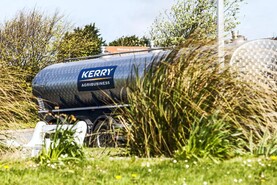The newly formed National Fodder and Food Security Committee met for the first time on Friday, 11 March in Teagasc Moorepark.
Minister for Agriculture Charlie McConalogue, chairperson of the committee Mike Magan and Director of Teagasc Frank O’Mara noted the committee has a job to do, but all put the meeting into perspective as a humanitarian crisis unfolds.
The attendance included farm organisations, the Department of Agriculture, Food and the Marine, Teagasc, members of the feed industry and co-ops, merchants, representatives of the fertiliser industry, agricultural consultants, media, the banking sector and meat and milk processors.
No fodder crisis
The attendance wanted to be clear that there is no fodder crisis at present, but costs and access to inputs such as fertiliser and fuel are a challenge.
A clear outcome from the meeting was that fodder, feed and fertiliser inventories are needed.
It was stated that there is enough cereal seed in the country to establish an additional 40,000ha to 50,000ha and that there should be enough pesticides available to meet that increase.
Any massive increase in tillage area seems unlikely, as access to land is a challenge
However, any massive increase in tillage area seems unlikely, as access to land is a challenge.
Teagasc's Michael Hennessey noted that he expects the cereal area to remain normal. An increase in maize area would most likely come from grassland, while there were suggestions to plant tillage crops on suitable land instead of wild bird cover crops under the Green, Low-carbon, Agri-environment Scheme (GLAS).
Crop diversification
There were suggestions to lift the crop diversification requirement on tillage farms, while representatives of the tillage sector were keen that the straw incorporation measure remain in place, as it can help to maintain the tillage area, and added that flexibility is used to allow farmers take land in and out of the scheme if the straw is required as fodder.
Tillage representatives noted that planting season is upon us and if the area planted to tillage crops is to increase, then decisions need to be made quickly.
Livestock
The focus on the livestock side from Teagasc was on silage. Pierce Kelly stated that drystock farmers need to produce 75% of their silage from the first cut and that this needs to be high quality.
He encouraged farmers and advisers to compile fodder budgets and mini nutrient management plans.
Teagasc outlined that the horticulture, pigs and poultry sectors are under pressure.
Michael McKeon stated that feed costs on pig farms have increased by 33% from January 2021 to March 2022 and are expected to rise further, while energy costs have increased by 80% to 100%.
Michael Hennessey stated that the horticulture sector is dependent on fertiliser and that potato and vegetable farmers are looking at costs of €10,000 to €36,000/ha.
Fuel
Michael Moroney from the Association of Farm and Forestry Contractors stated that security of supply and cost of fuel are major challenges facing the sector.
He noted that machinery contractors use approximately 360 million litres of diesel per year and that the average self-propelled harvester, of which there are approximately 700 in the country, will consume in the region of 3,000l of diesel each day. Over a 40-day period, that’s 80 million litres or more for that sector.
Adding in baled silage, he stated that there is a requirement for 200 million litres of diesel for silage in 2022 and that the cost has doubled.
He explained that a self-propelled silage harvester outfit at the same output as last year would be spending €110,000 more on diesel in 2022.
He stated that 10 contractors have already said that they will not cut silage this season - that’s the capacity to cut approximately 30,000ac of silage.
The group is expected to meet at two-week intervals and noted that work will be carried out in the meantime as cereal crops need to be planted in the coming weeks.






 This is a subscriber-only article
This is a subscriber-only article










SHARING OPTIONS: